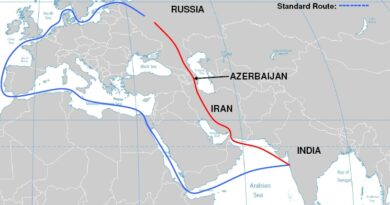National Mission for Clean Ganga (NMCG)
Contents
About National Mission for Clean Ganga(NMCG):
- National Mission for Clean Ganga(NMCG) was registered as a society on 12th August 2011 under the Societies Registration Act 1860.
- It acted as implementation arm of National Ganga River Basin Authority(NGRBA) which was constituted under the provisions of the Environment (Protection) Act (EPA),1986. NGRBA has since been dissolved with effect from the 7th October 2016, consequent to constitution of National Council for Rejuvenation, Protection and Management of River Ganga (referred as National Ganga Council)
The Act envisages five tier structure at national, state and district level to take measures for prevention, control and abatement of environmental pollution in river Ganga and to ensure continuous adequate flow of water so as to rejuvenate the river Ganga as below;
1. National Ganga Council under chairmanship of Hon’ble Prime Minister of India.
2. Empowered Task Force (ETF) on river Ganga under chairmanship of Hon’ble Union Minister of Jal Shakti (Department of Water Resources, River Development and Ganga Rejuvenation).
3. National Mission for Clean Ganga(NMCG).
4. State Ganga Committees and
5. District Ganga Committees in every specified district abutting river Ganga and its tributaries in the states.
Structure:
NMCG has a two tier management structure and comprises of Governing Council and Executive Committee. Both of them are headed by Director General, NMCG. Executive Committee has been authorized to accord approval for all projects up to Rs.1000 crore. Similar to structure at national level, State Programme Management Groups (SPMGs) acts as implementing arm of State Ganga Committees. Thus the newly created structure attempts to bring all stakeholders on one platform to take a holistic approach towards the task of Ganga cleaning and rejuvenation
Objectives of National Mission for Clean Ganga
The Government of India organized the National Mission for Clean Ganga (NMCG) at Delhi’s Vigyan Bhavan. NMCG focuses on pollution reduction interventions including interception, diversion and the treatment of wastewater that flows through the open drains. It aims to reduce pollution through bioremediation, apt in-situ treatment, pioneering technology, sewage treatment plants (STP) and effluent treatment plants (ETP).
Some of the major objectives of the Nation Mission for Clean Ganga are:
- The mission incorporates rehabilitating and boosting the existing STPs and instant short-term steps to curb pollution at exit points on the riverfront in order to check the inflow of sewage.
- To maintain the continuity of the water flow without changing the natural season variations.
- To restore and maintain the surface flow and groundwater.
- To regenerate and maintain the natural vegetation of the area.
- To conserve and regenerate the aquatic biodiversity as well as the riparian biodiversity of the river Ganga basin.
- To allow participation of the public in the process of protection, rejuvenation and management of the river.
Deliverables of the Project :
- Ground control and reference points information.
- LiDAR : Raw and processed data along with all associated files & Meta data .
- Raw and Processed Orthophotos (12 cm GSD) & DEM (vertical accuracy better than 50 cm), contour of 0.5/1.0 m for the plain areas of Ganga basin .
- Topographic map at 1:10,000 Scale with 0.5/1.0 m contour interval in digital form (.shp format) of the Plain areas of Ganga Basin.
- Topographic map at 1:25,000 Scale with 10-20 m contour interval in digital form (.shp format) in the hilly terrain of Ganga Basin.
- Outlet/vent of sewerage and other discharges from all dwelling units, industrial, commercial and all types of other institutions will be mapped, from the source outlet to the public drainage network.
- The entire public drainage network in the project area will be integrated with the present project mapping..
- River Bathymetry data along the river course..
- DTDB & DCDB of the area as per feature based Data Model of SoI.
Other Initiatives Taken
- Ganga Action Plan: It was the first River Action Plan that was taken up by the Ministry of Environment, Forest and Climate Change in 1985, to improve the water quality by the interception, diversion, and treatment of domestic sewage.
- The National River Conservation Plan is an extension to the Ganga Action Plan. It aims at cleaning the Ganga river under Ganga Action Plan phase-2.
- National River Ganga Basin Authority (NRGBA): It was formed by the Government of India in the year 2009 under Section-3 of the Environment Protection Act, 1986.
- It declared the Ganga as the ‘National River’ of India.
- Clean Ganga Fund: In 2014, it was formed for cleaning up of the Ganga, setting up of waste treatment plants, and conservation of biotic diversity of the river.
- Bhuvan-Ganga Web App: It ensures involvement of the public in monitoring of pollution entering into the river Ganga.
- Ban on Waste Disposal: In 2017, the National Green Tribunal banned the disposal of any waste in the Ganga.
You can find many articles related to SCHEMES (part of GS II) in our website. Go through these articles share with your friends and post your views in comment section.
Discover more from Simplified UPSC
Subscribe to get the latest posts sent to your email.



